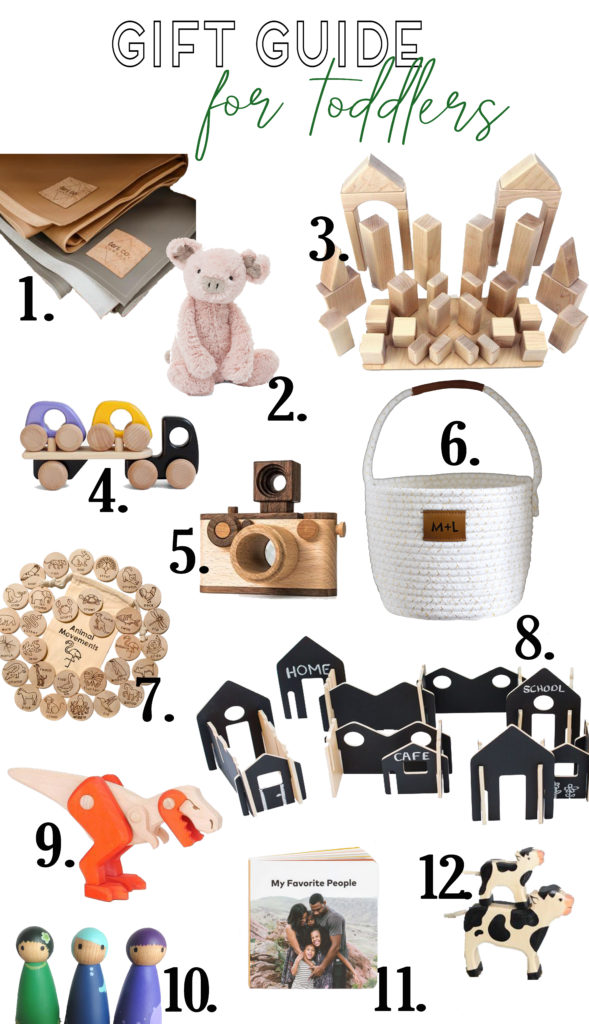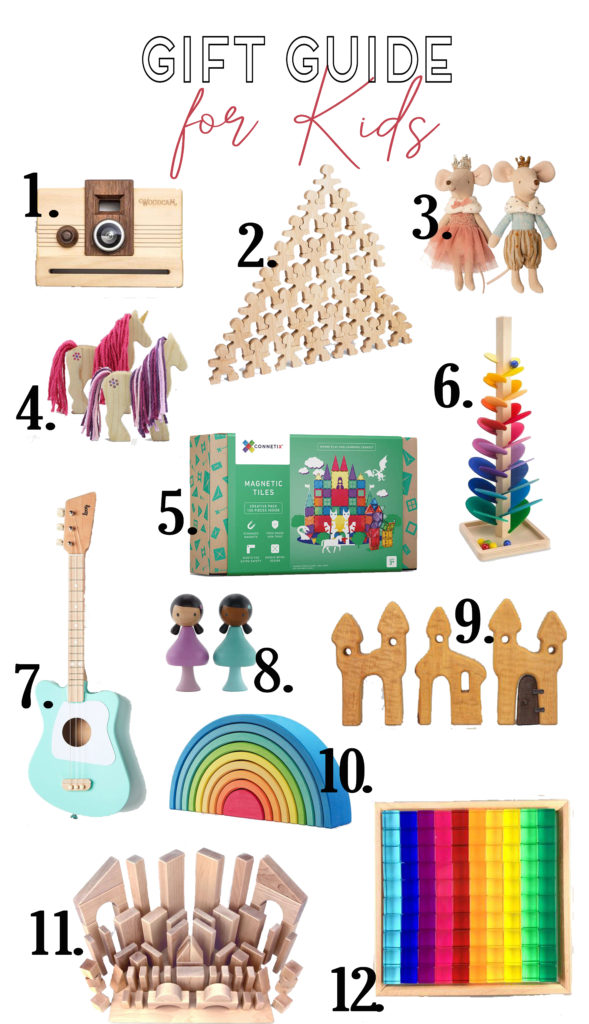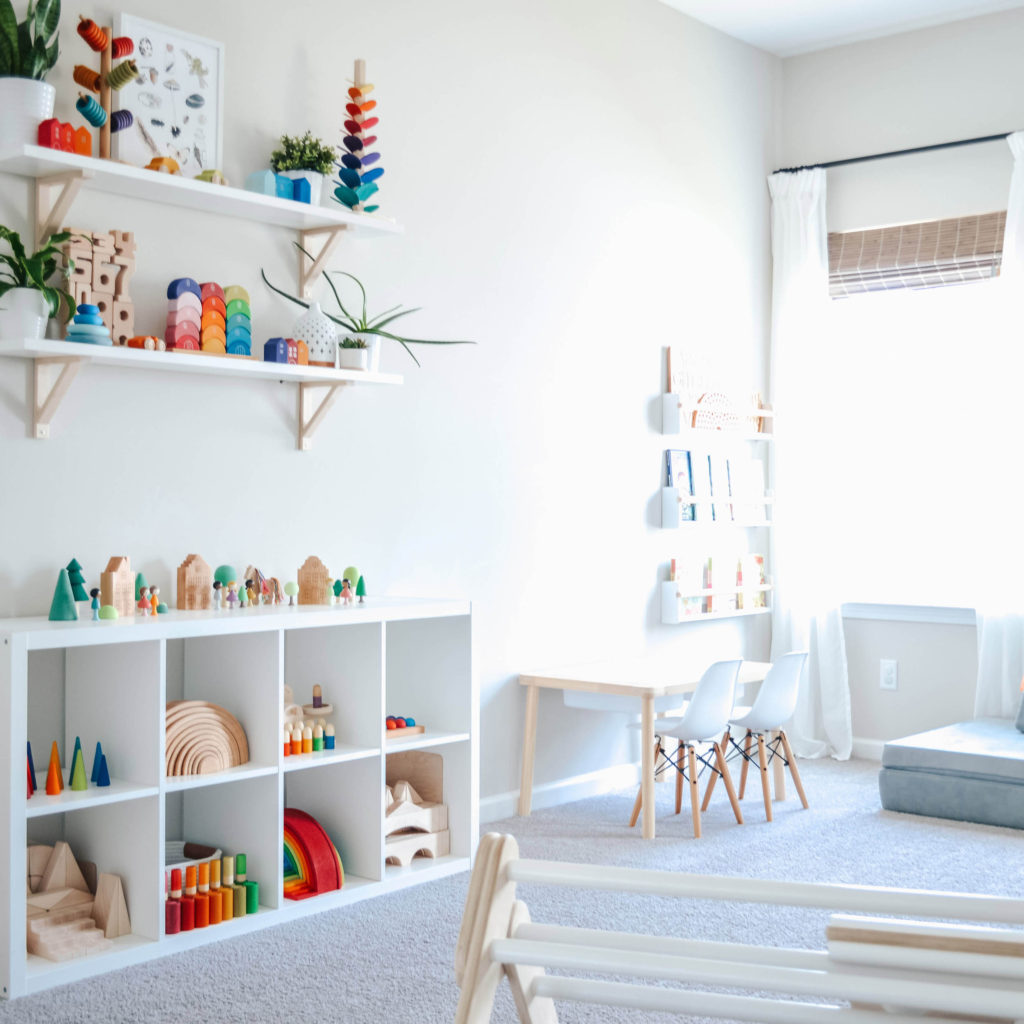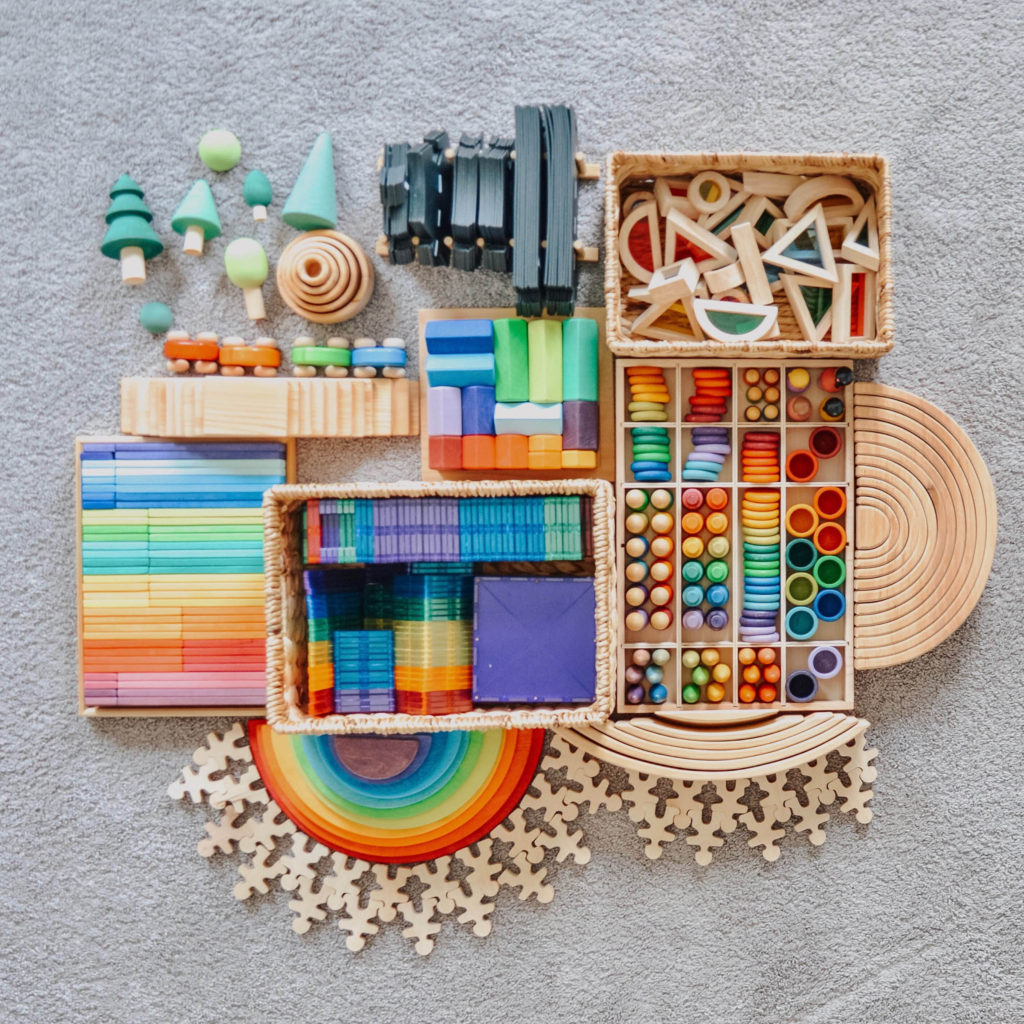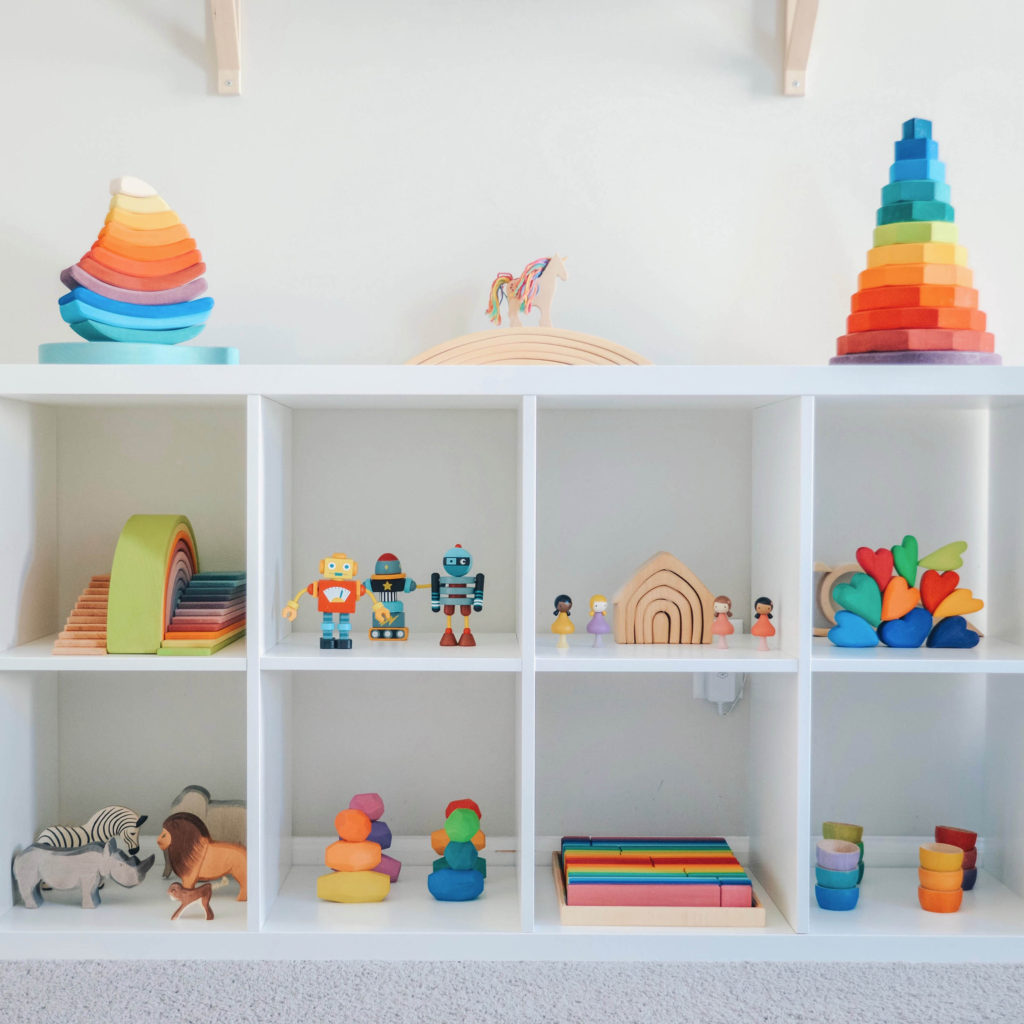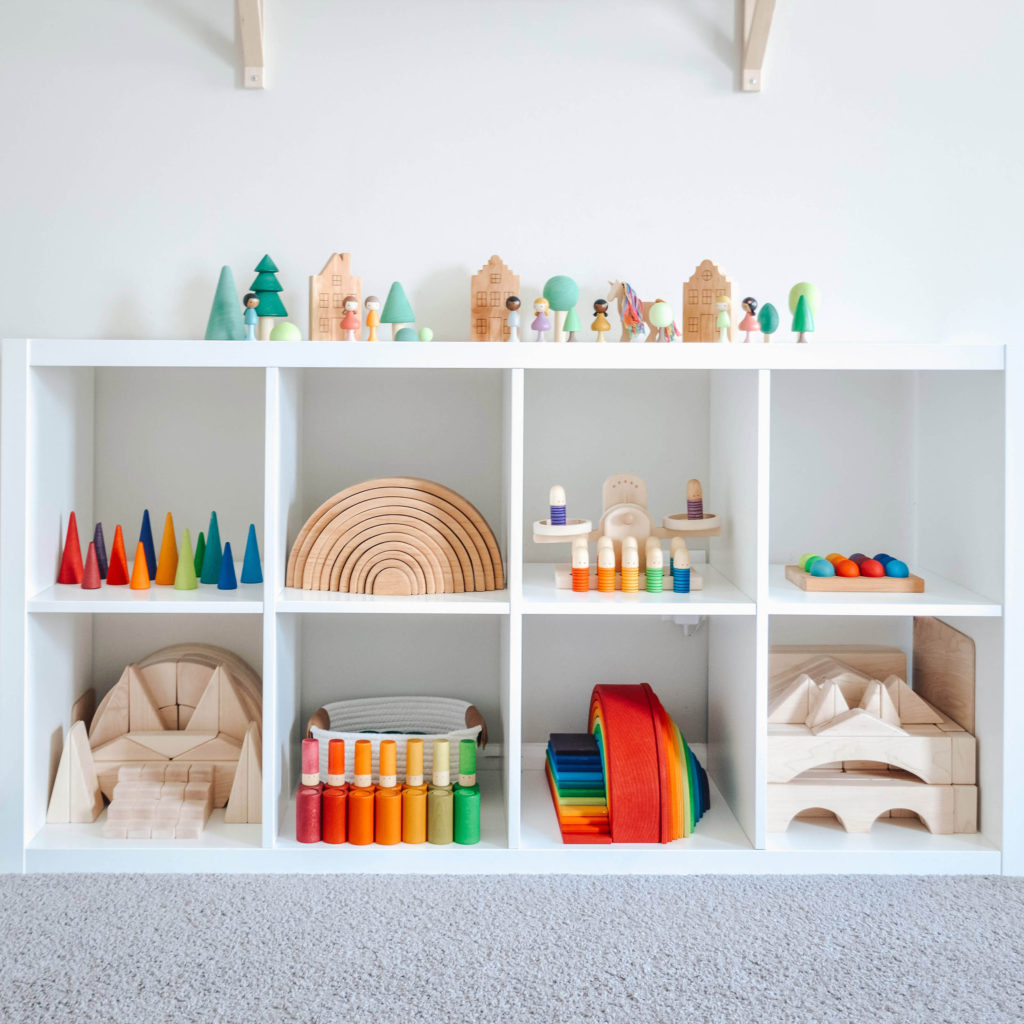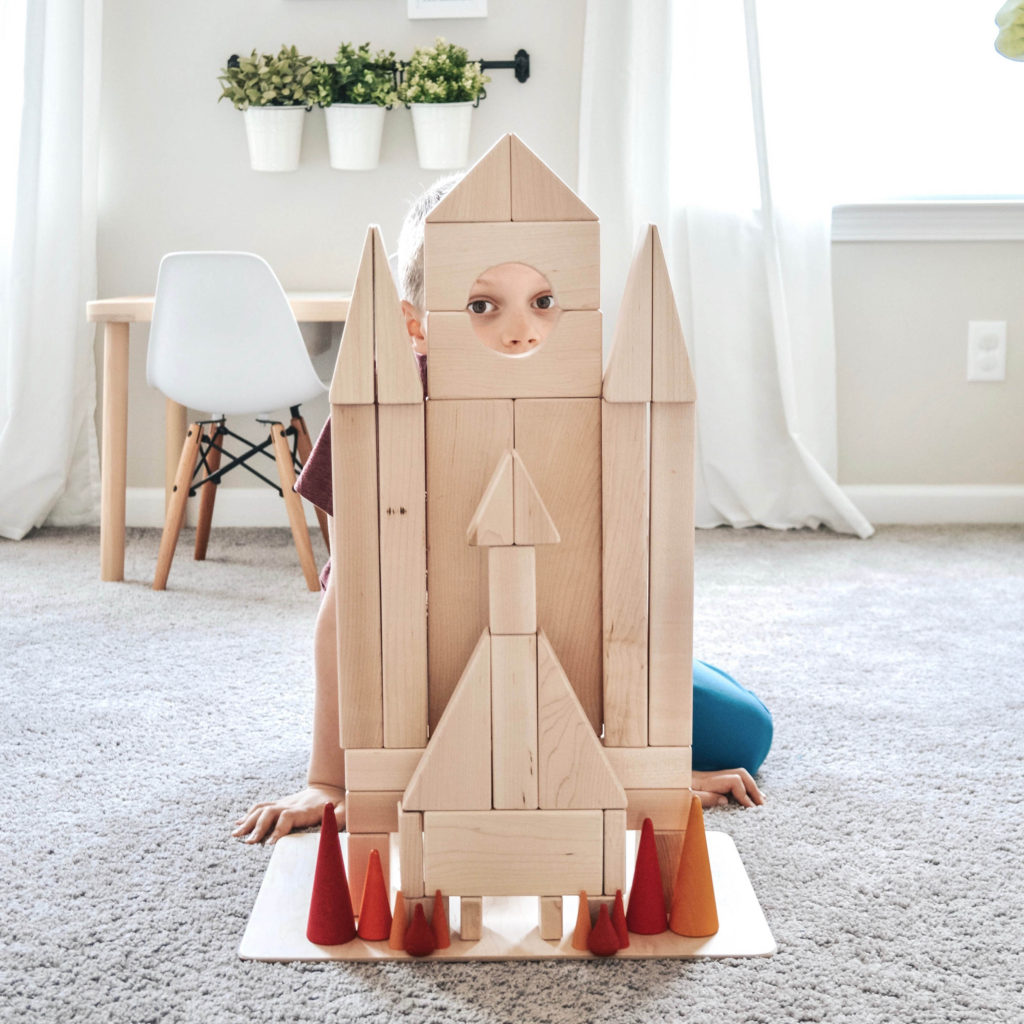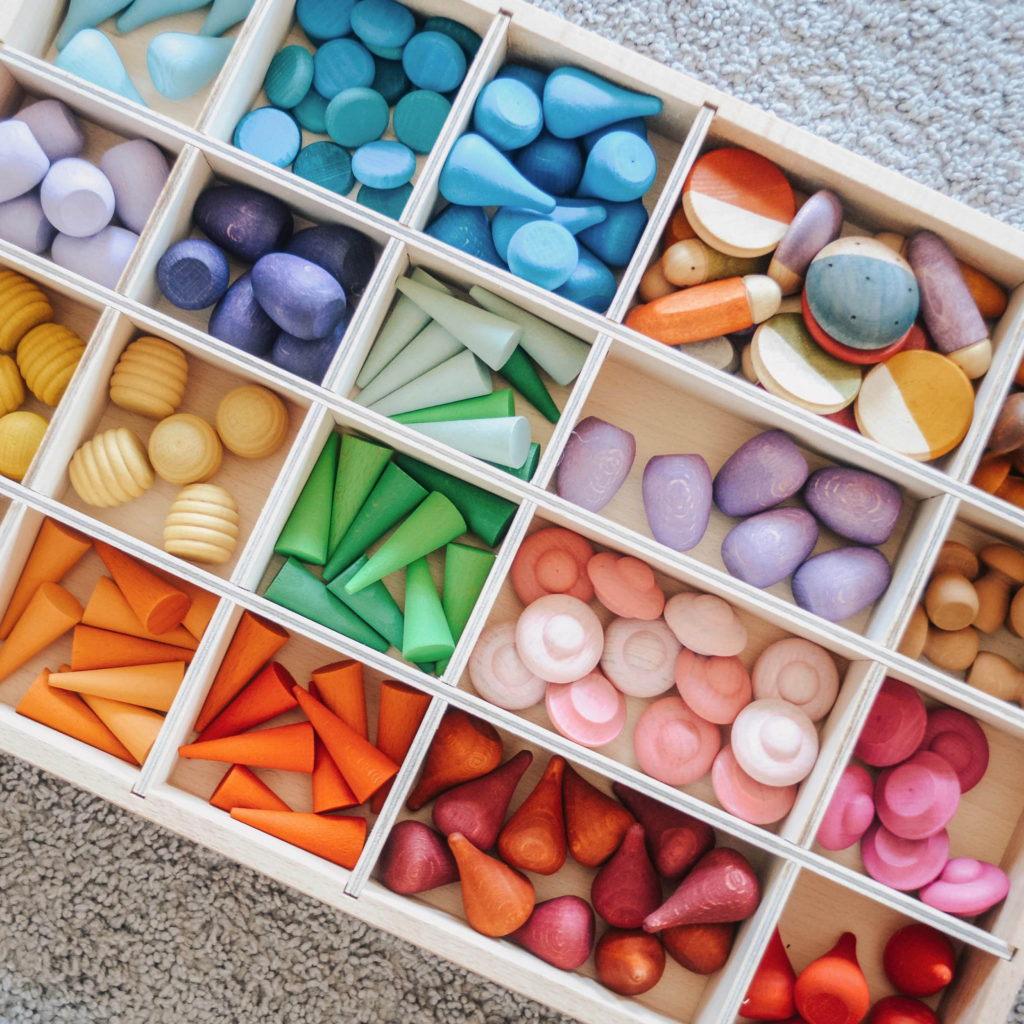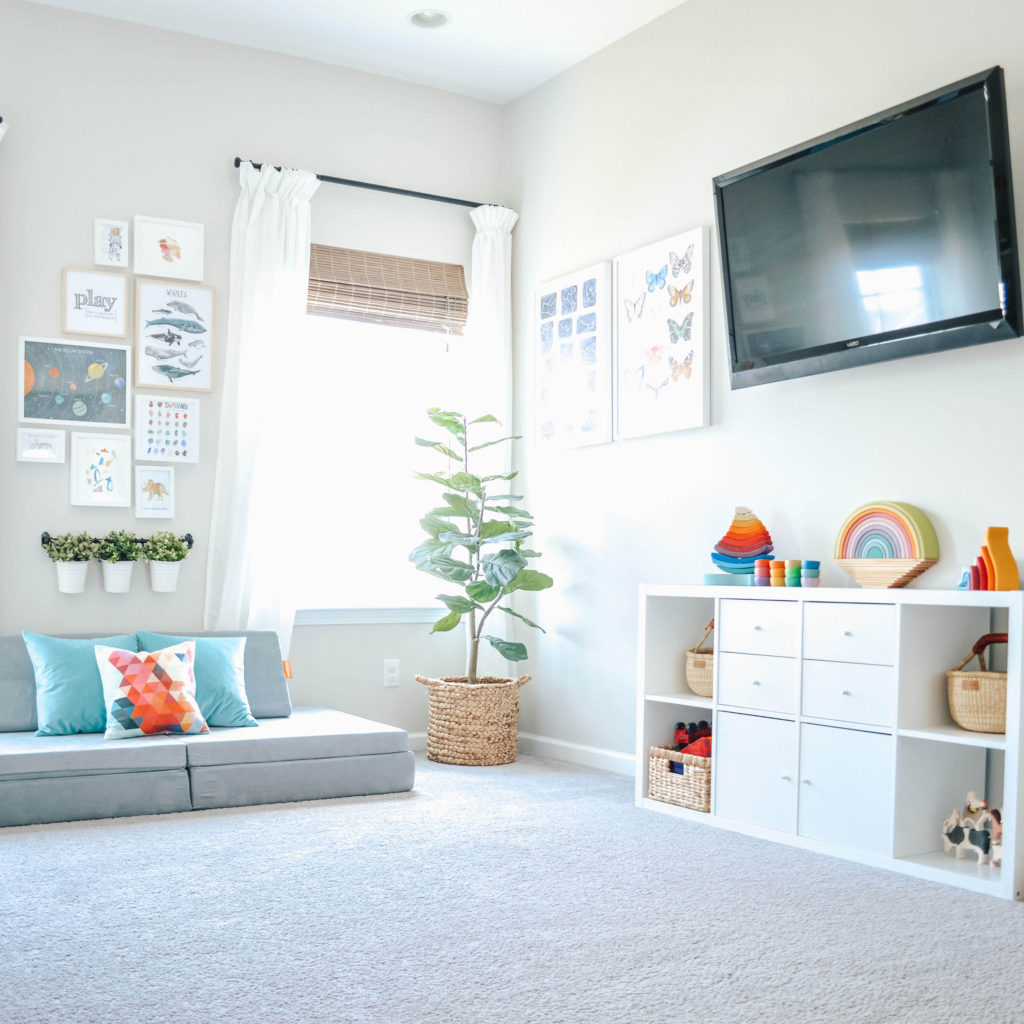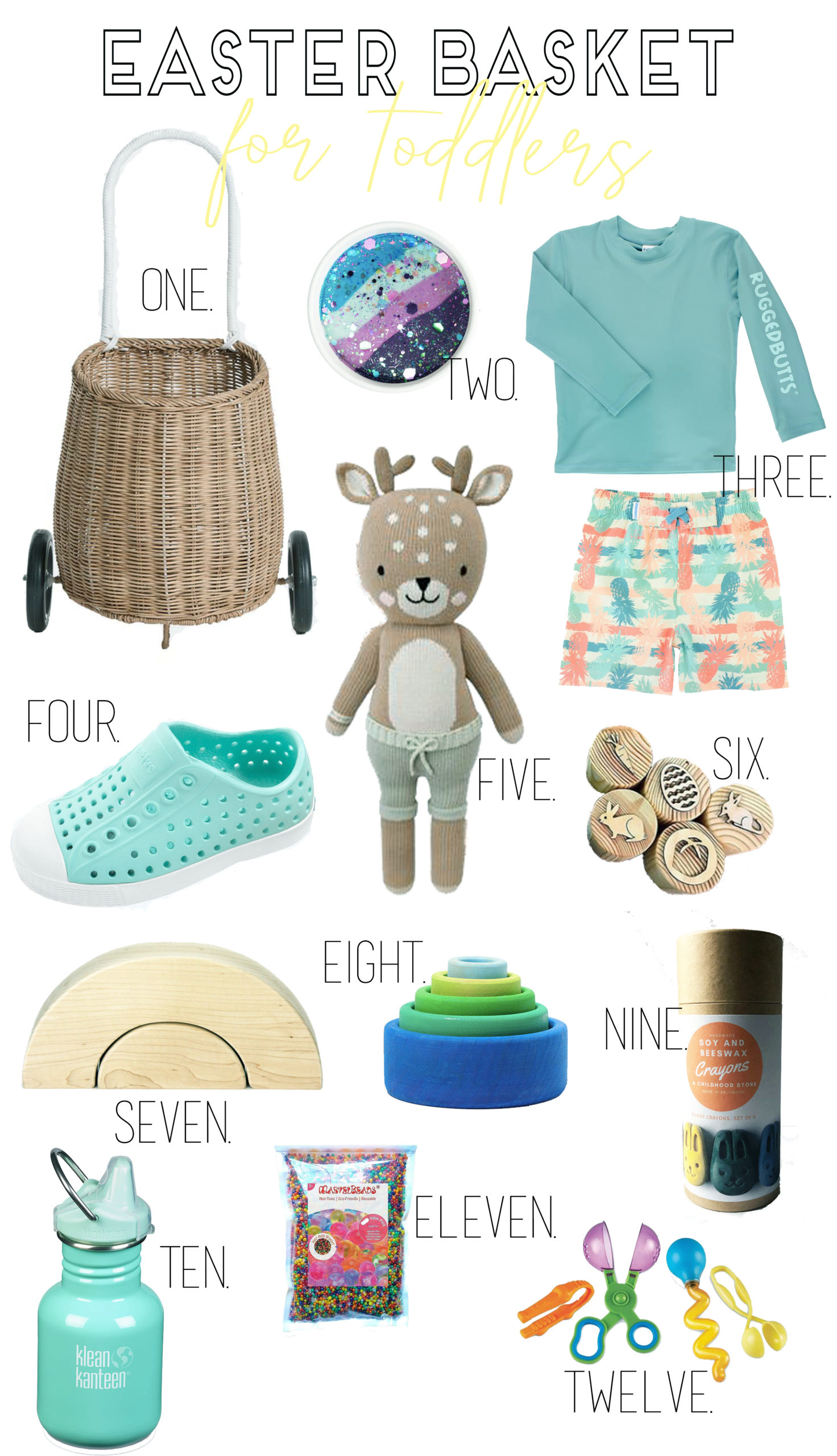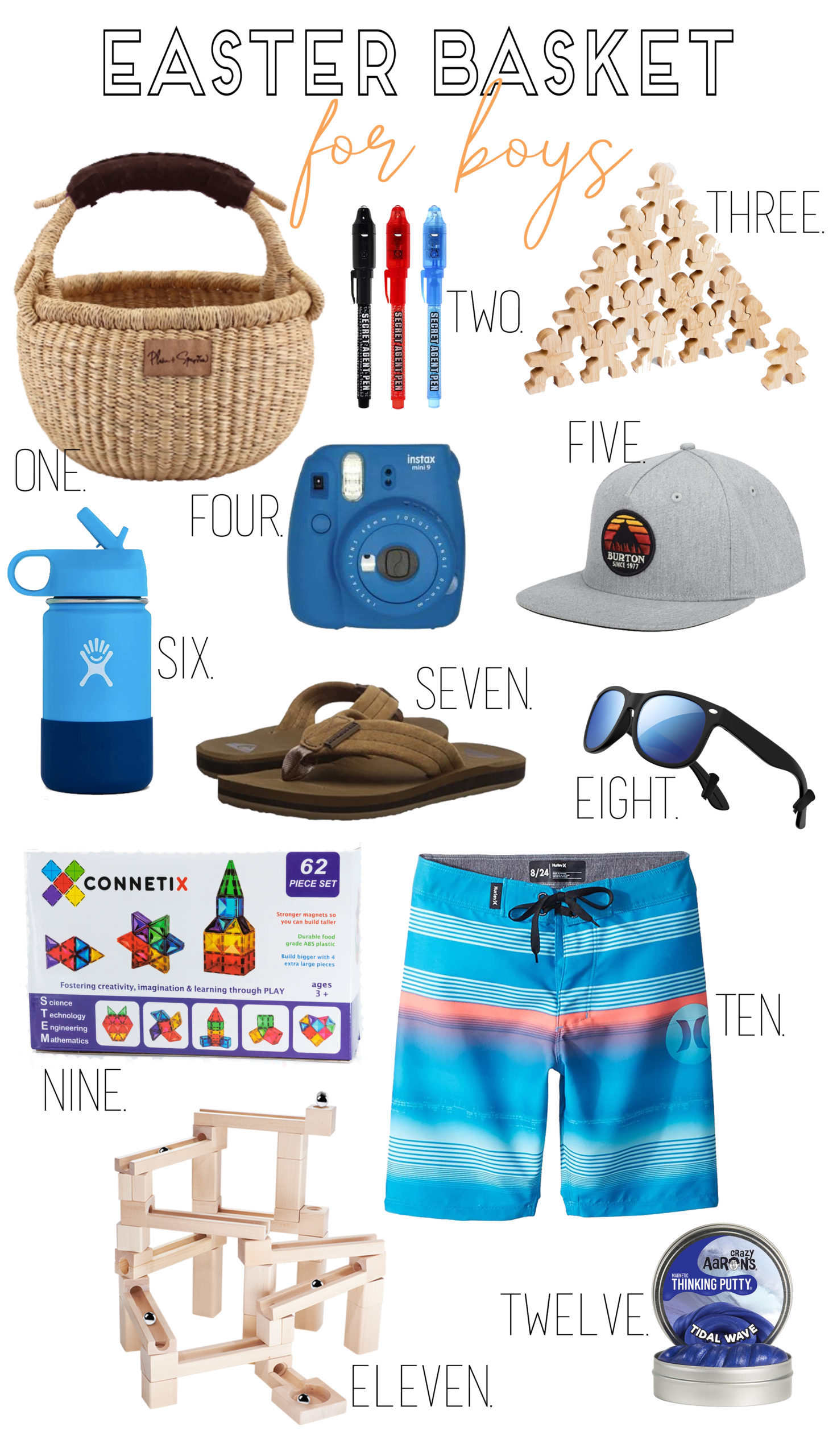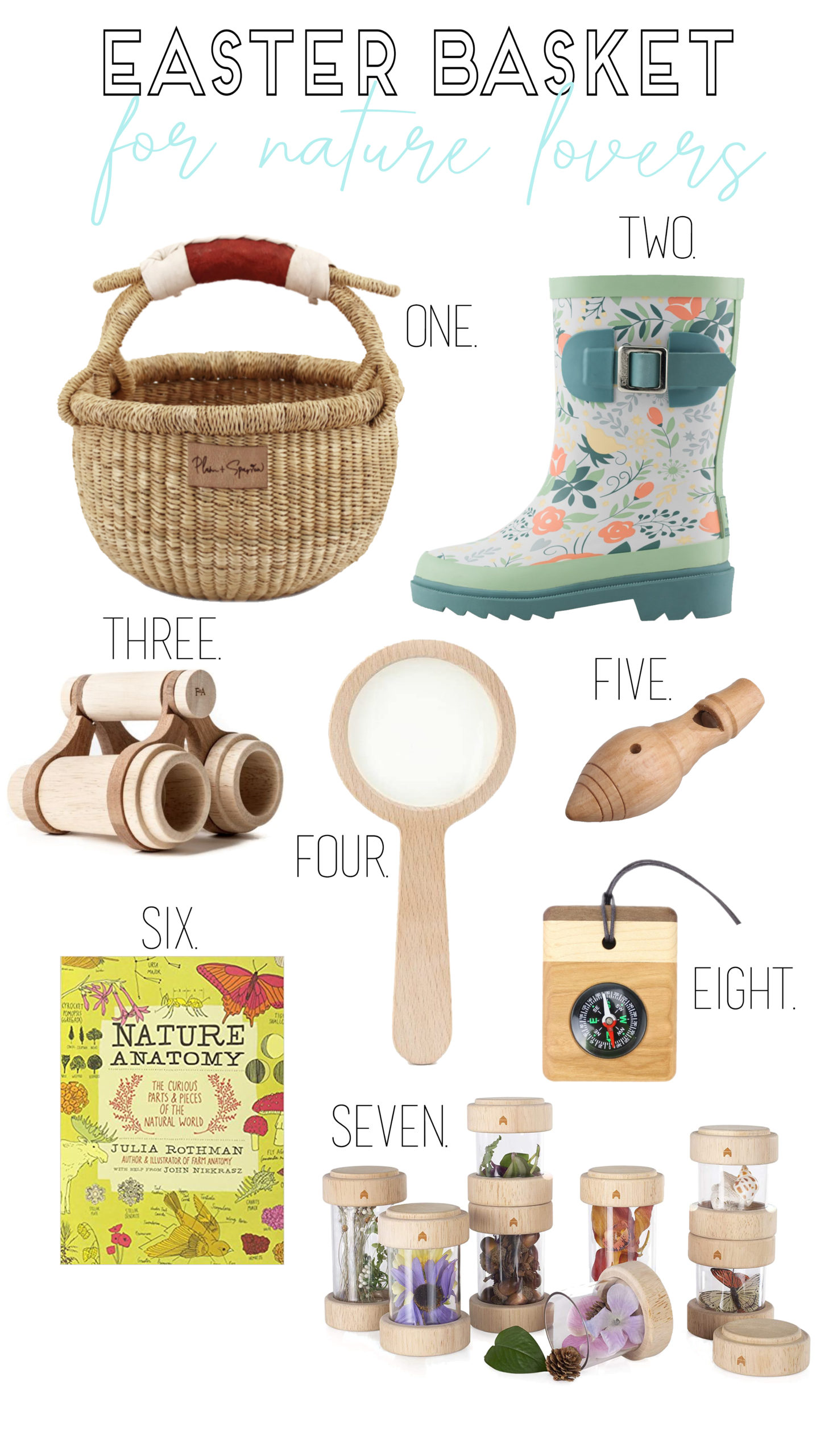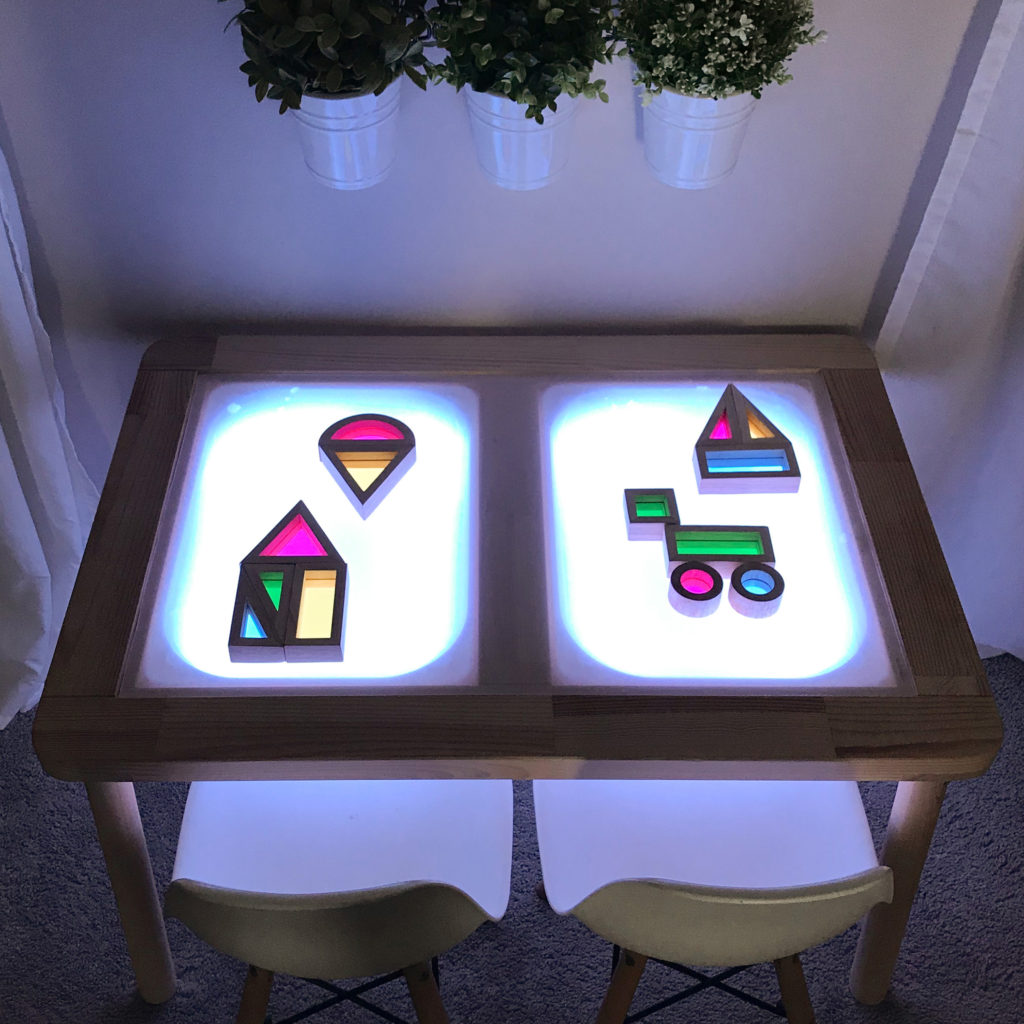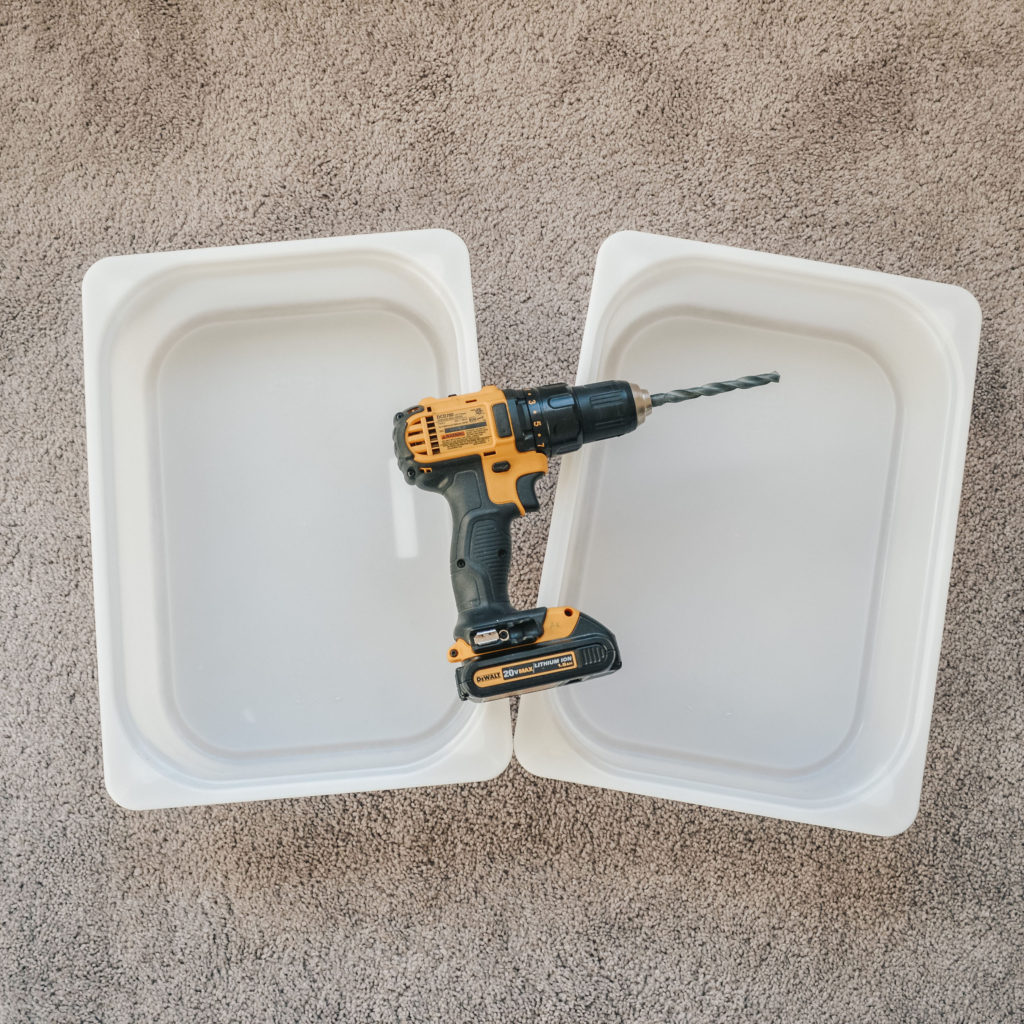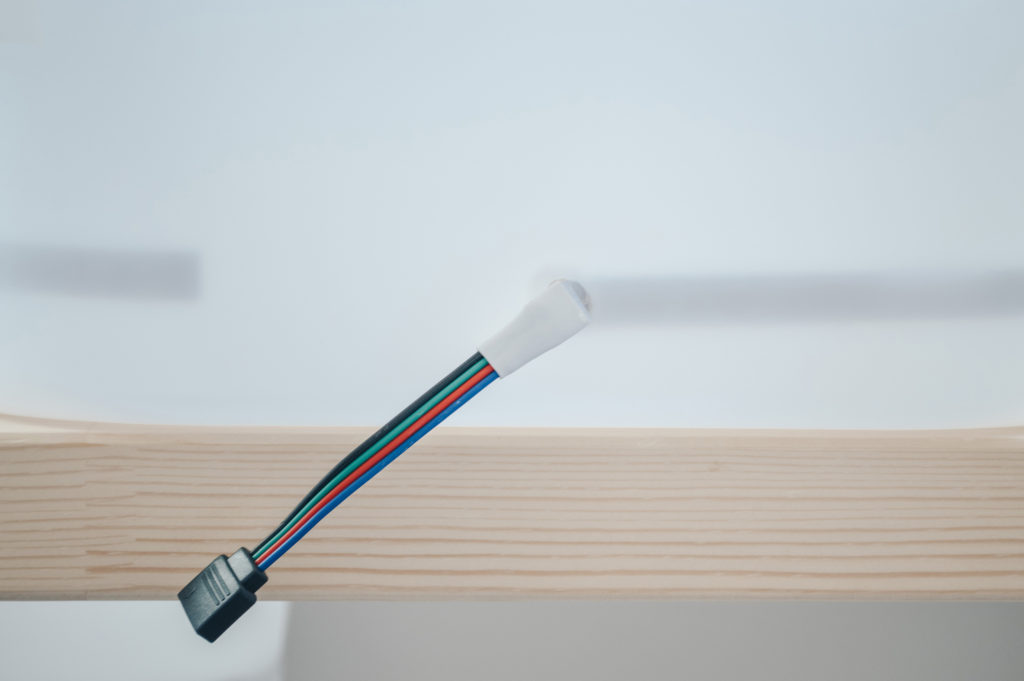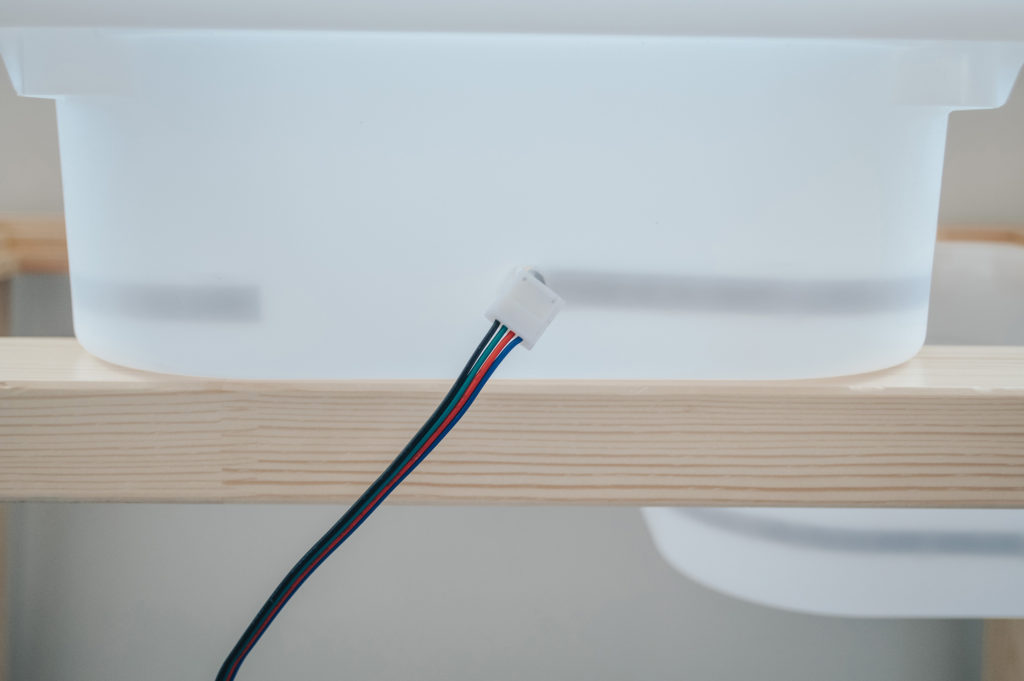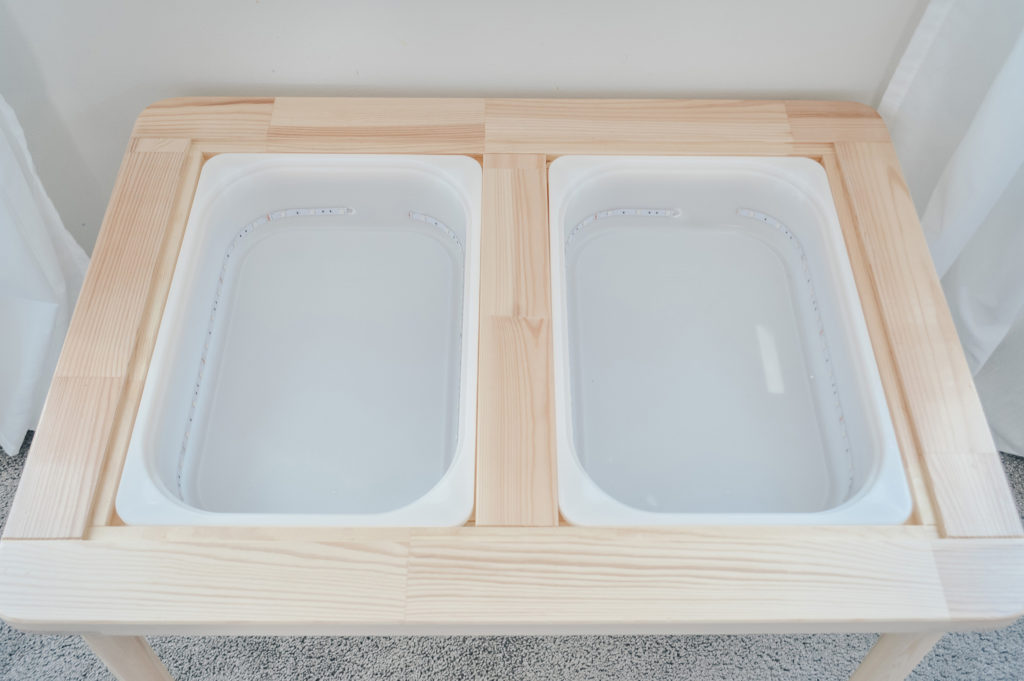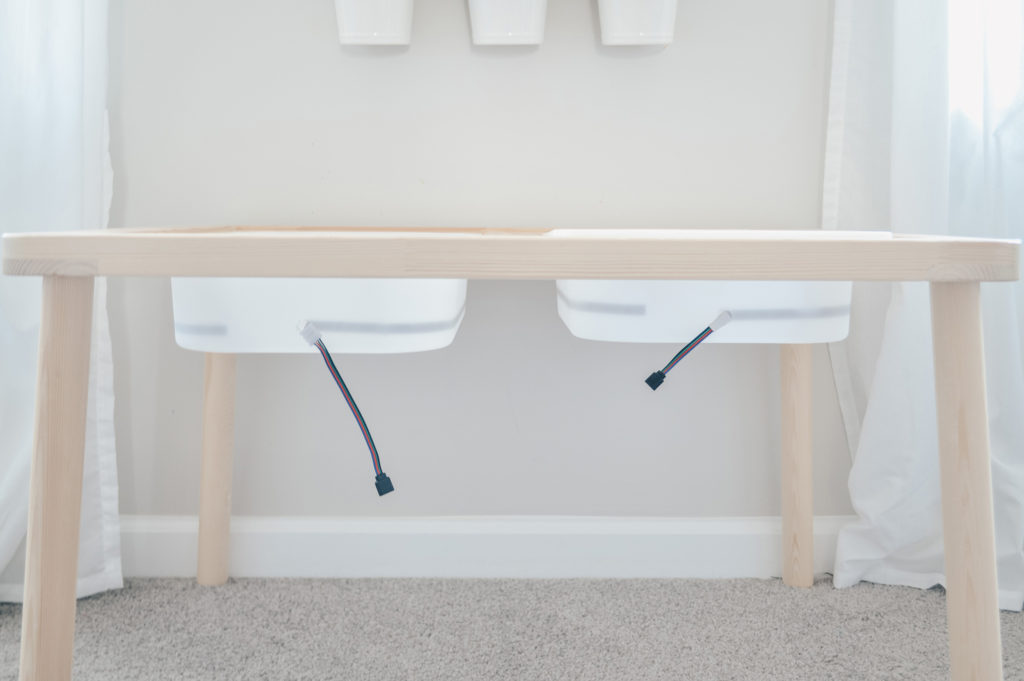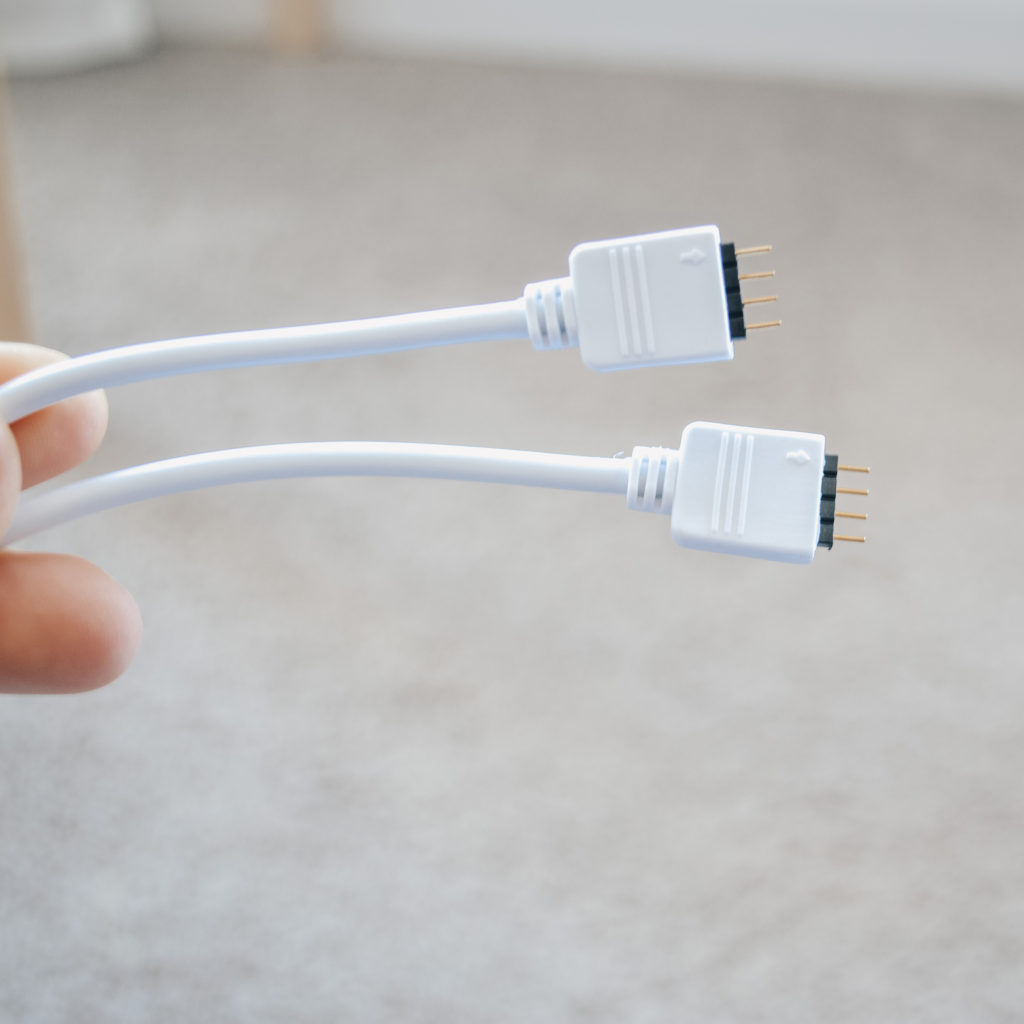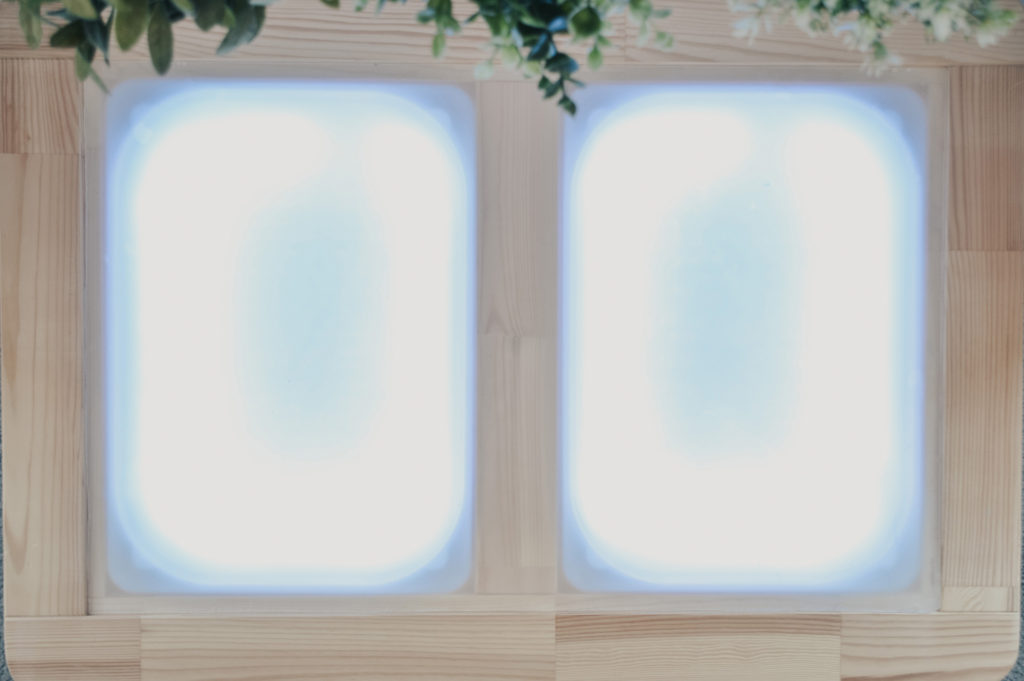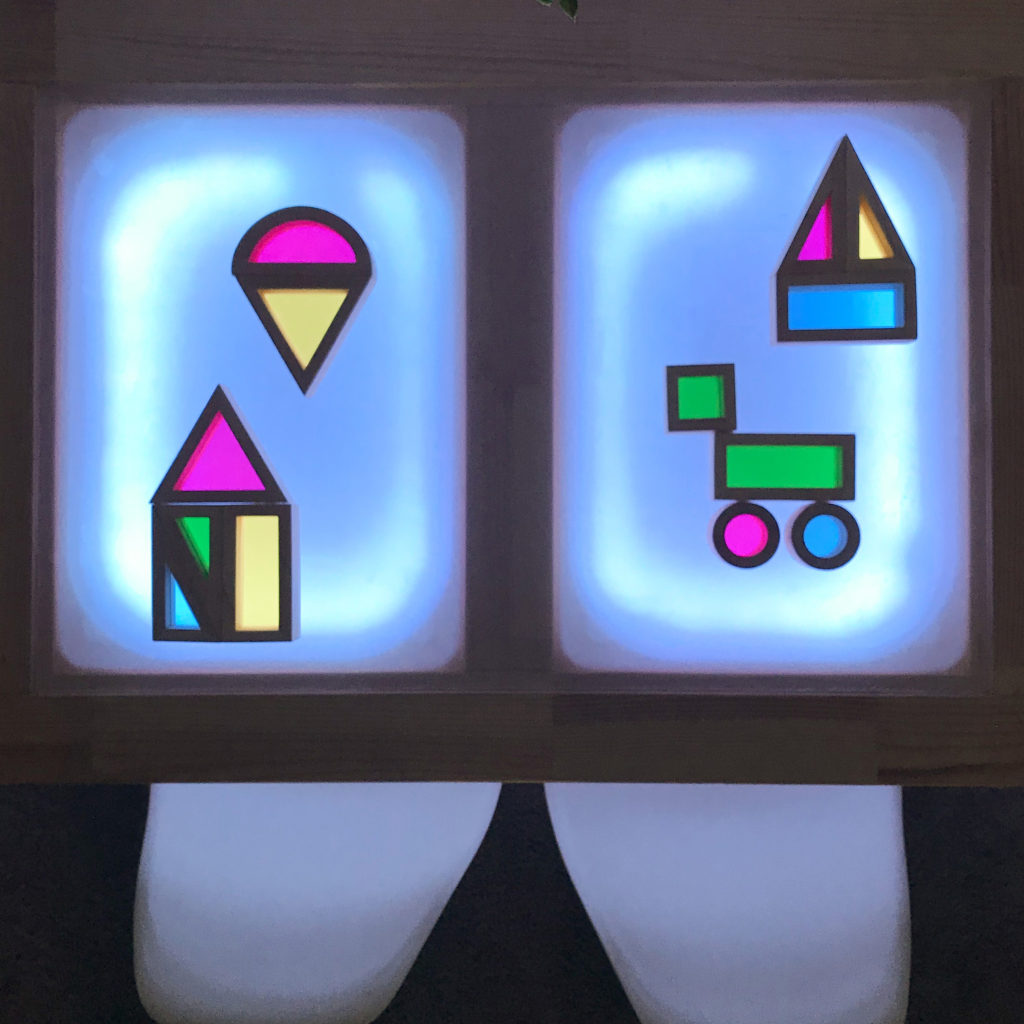If you follow me over on Instagram, you know it’s not a secret that I prefer unit blocks over any other wood block on the market, but let’s talk about why.

What is a Unit Block?
If you’re not familiar with Unit Blocks, they are a standardized block often found in preschools and some kindergarten classrooms. A unit is 1 3/8” (3.49cm) and all blocks are based on this measurement, thus giving you the perfect fit, no matter what you are building. A traditional unit block is made with hard maple, is a natural wood color, and are 100% worth the investment because they will last for generations.
Everwood Friends is my favorite company for Unit Blocks. Not only are they made in the USA with high quality Maple, but the edge are carefully rounded for safety and they have a beautifully smooth finish. Plus you can buy them in sets, as individual blocks, with or without gems and graphics; oh and did I mention Castle Blocks? All these options allow you to build your own unique collection, based on your family’s needs, budget, and kid’s interests.
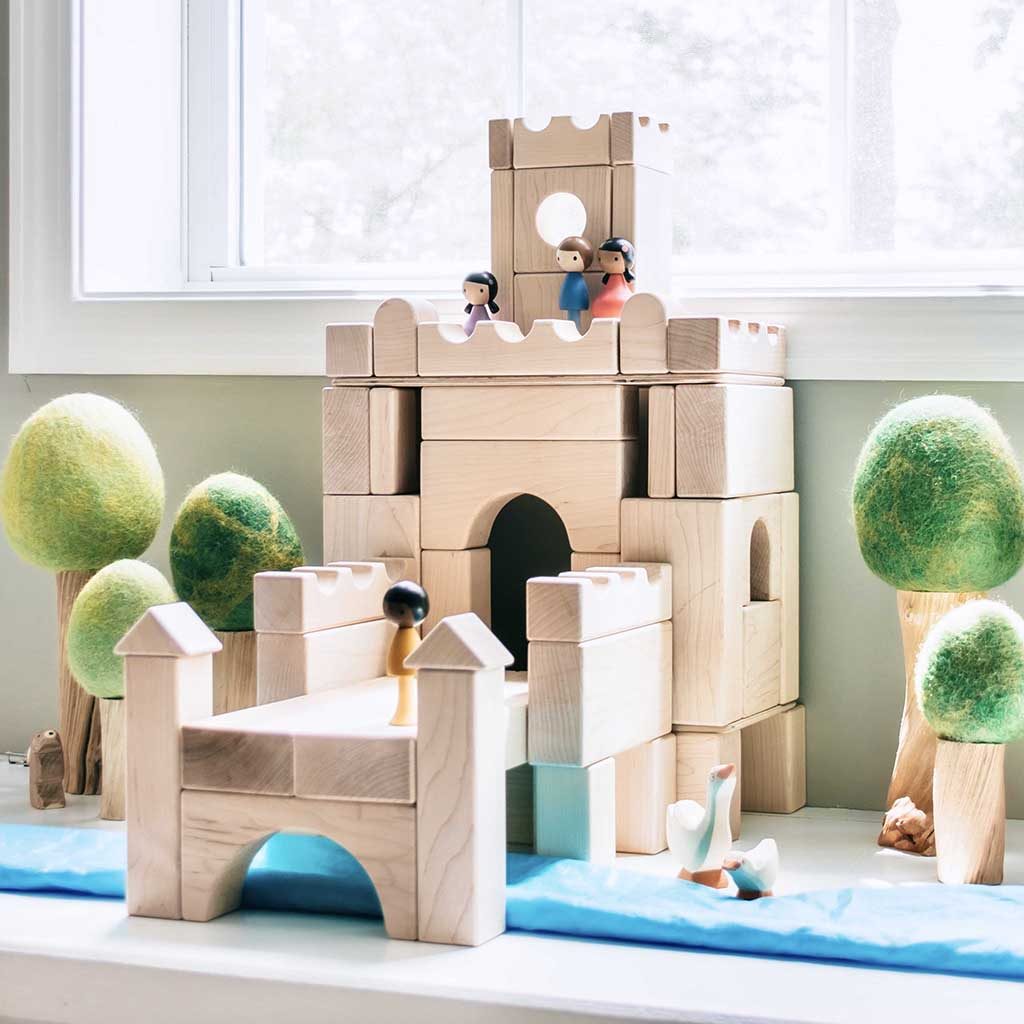
Grimm’s Blocks
Another popular block that you might be familiar with is Grimm’s. Grimm’s blocks are built on a 4cm scale (approximately 0.5 cm bigger than a unit block) with limewood, which tends to be a lighter, but softer wood. They’re also painted with non toxic, waterbased colored stains and have a rougher texture, which provides grip when building. So while they’re not a true unit block, they are a popular block for building.
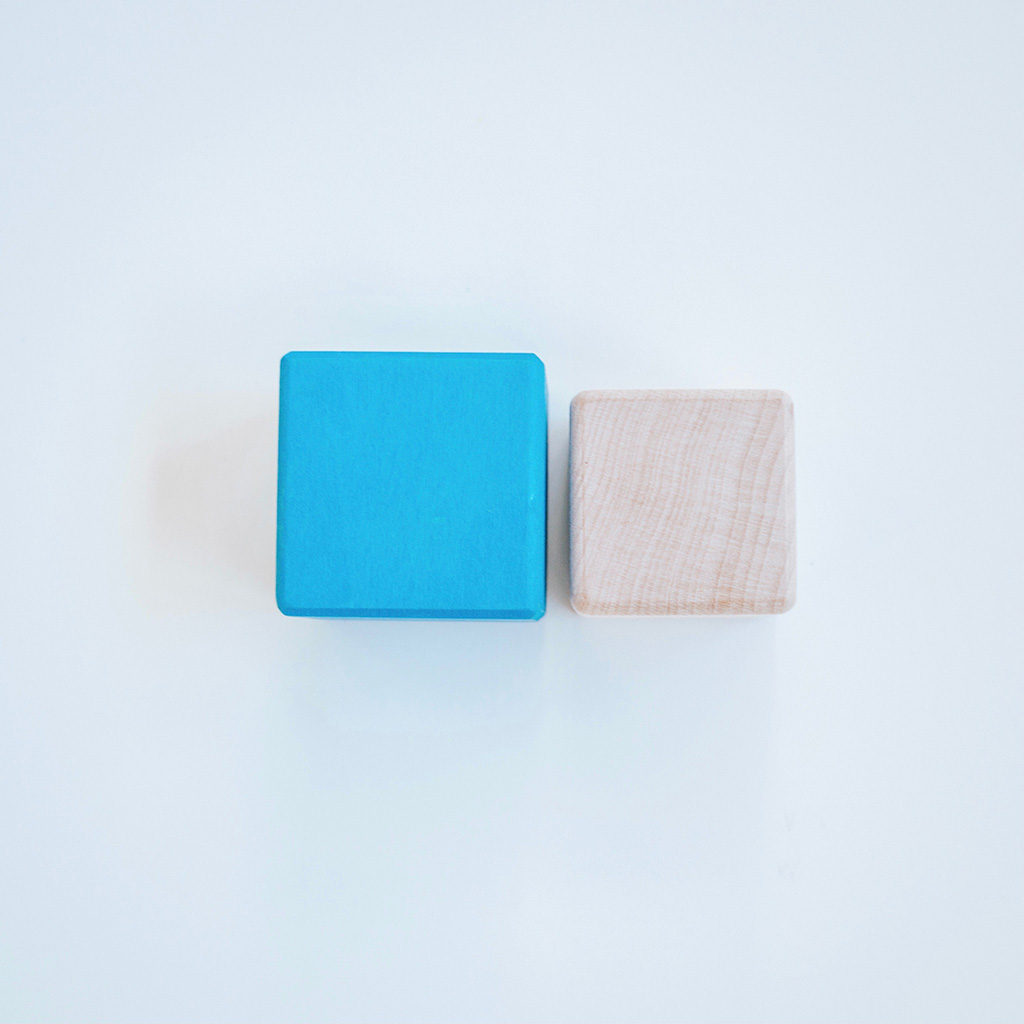
Which is Better?
I do love the color of Grimm’s, however I’m not a huge fan of their blocks. As you can see below, the type of wood that Grimm’s are made of tends to dent easily and because of this, I don’t believe they’ll hold up for the long haul, especially with 5 kids. The damage you see in the photo wasn’t made from rambunctious play, but from a build that came crashing down; and if you’ve ever played with blocks, you know that falling structures are a given. The other thing that I don’t love about Grimm’s is that unless you have multiple sets, the odds of you having a block to fill the space that you need or give you the right height in a more advanced build is rare, especially if you’re after color coordination. This isn’t a fault of the blocks per-say, but rather their 4cm scale.
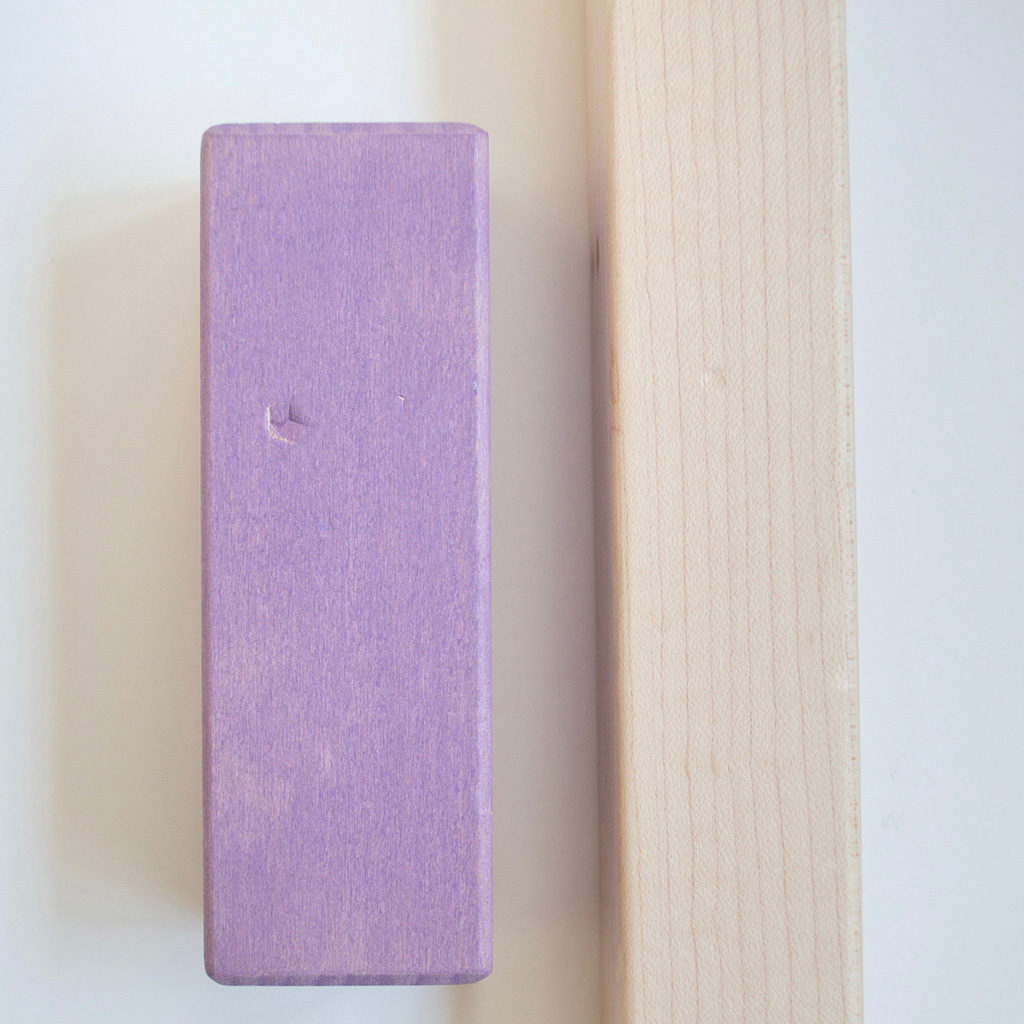
On the other hand, our Everwood unit blocks have taken much more of a beating and the marks on them are minimal- as in I had to really look in order to find one with a dimple. (Can you spot it?) In fact, I know people who’s kids play with the same unit blocks that they played with as a kid. To me, that makes them worth the investment alone; to know that they’ll hold up to generations of play.
Getting Started with Unit Blocks
One question I get asked a lot when talking about unit blocks is where to start? With so many shapes, sets and options, it can sometimes feel overwhelming.
If you have older kids (4-5+ yrs), I recommend you start with the Everwood Core Set. This set will give you a good mix of basic shapes for great builds, and will also help you determine what other shapes might be missing from your collection. If you have younger kids, a great place to start is with the 42pc Unit Block Pyramid. The pieces in this set are larger, which is easier for younger kids to balance and build with; and it also comes with a tray, for easy clean up. The Everwood trays will fit on a cubby or standard toy shelf. Also, if you’re going to be building on carpet or want to make multi-level structures, don’t forget your platforms.
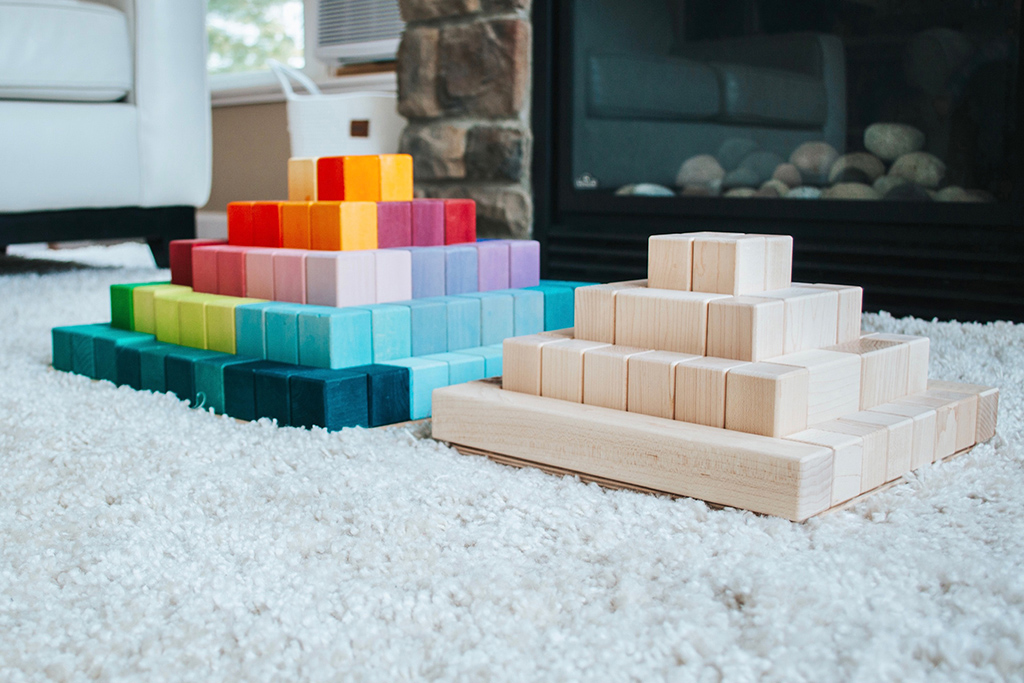


Benefits of Block Play
Some of the benefits of block play (taken from National Association for the Education of Young Children) include:
- Problem Solving– I want to build X, how can I do that?
- Imagination– can follow their own plans
- Self-Expression– explore and express themselves
- Mathematics– concepts such as length, measurement, comparison, number, estimation, symmetry, balance
- Continuity and permanence– engages spatial sense and motor abilities
- Creativity– can be moved freely and combined in numerous ways
- Science– test hypothesis and build scientific reasoning
- Self-Esteem– they have ideas and they can bring them to life
- Social and Emotional growth– take turns, share, cooperation
- Development in all areas– fine and gross motor skills

Storage
When it comes to Unit Block storage, I actually prefer a block shelf over trays, because blocks can be grouped by shape and are therefore easier to spot without having to dig or move things around. We also use baskets for smaller pieces that are the same shape, to make cleanup quick and keep the shelf looking neat. However, I know a lot of people who love the option of having a tray, because most stack for storage and it’s easier to tell when pieces are missing, plus they don’t take up as much space.

Building with Unit Blocks
I’ve touched on this a little bit, but the reason I, as an adult, love building with unit blocks is because of their precise measurements. There is literally always a block, a triangle, or an arch that fits; which allows my visions to come to life. It also makes building less frustrating, more visually appealing, and sturdier for play when the kids take over.
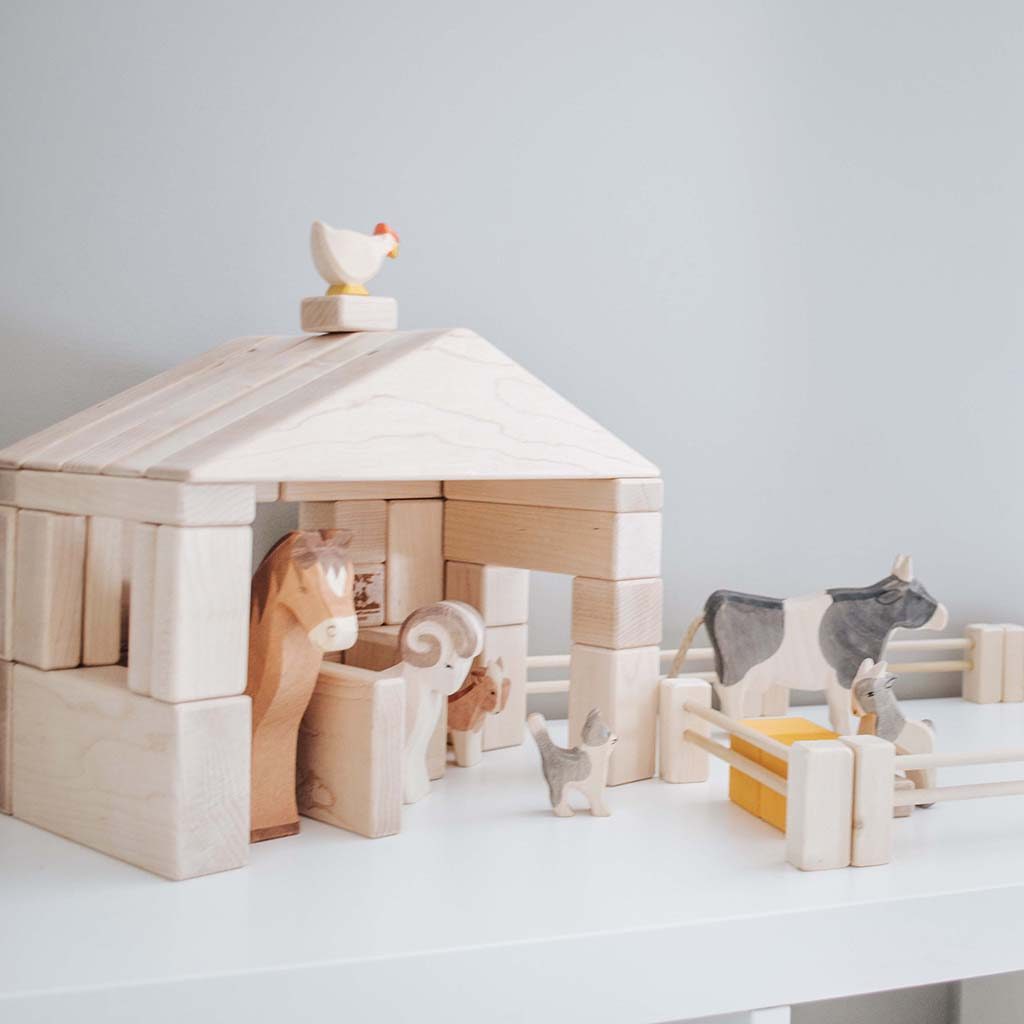
That’s not to say that Unit Blocks and blocks of other scales can’t work together. I love the color that Grimm’s blocks add to block builds, but it does take some trial and error to get the sizing right and it can be a complicated process if you’re looking for a specific color.

Building with Unit Blocks can be a relaxing creative outlet for both kids and adults alike. There are endless amounts of combinations and creations that can be made, which is why I’d classify them as the ultimate open ended toy.
WHAT IS YOUR FAVORITE ASPECT OF BLOCK PLAY?
*Our Everwood Friends collection is made up of blocks that were both purchased and gifted in exchange for our honest opinion. The views and opinions you see on this blog are strictly my own and I would never endorse or promote something that wouldn’t fit with our lifestyle or that my family wouldn’t use in our everyday lives. Thank you for supporting the brands that make this blog possible.*


